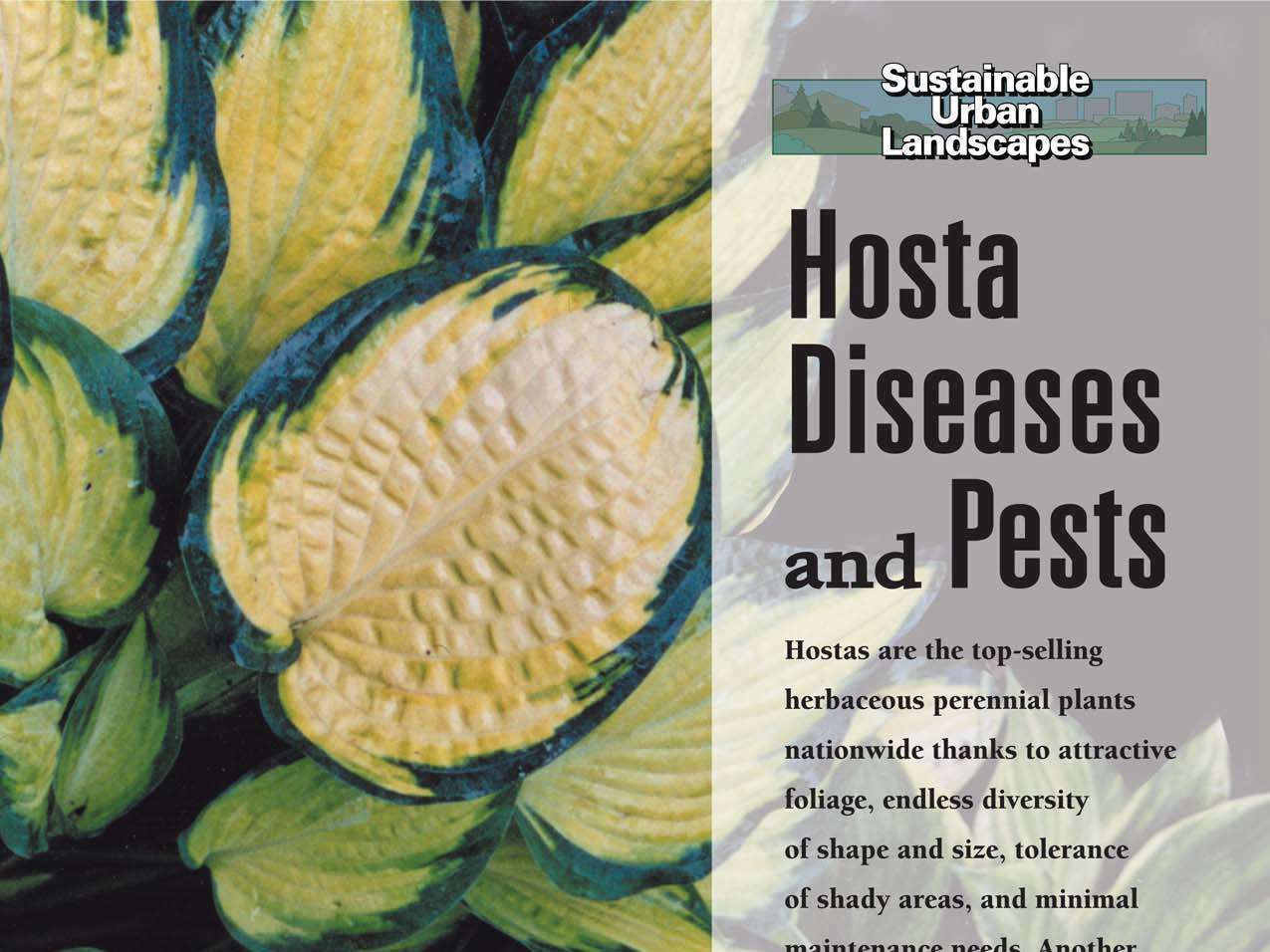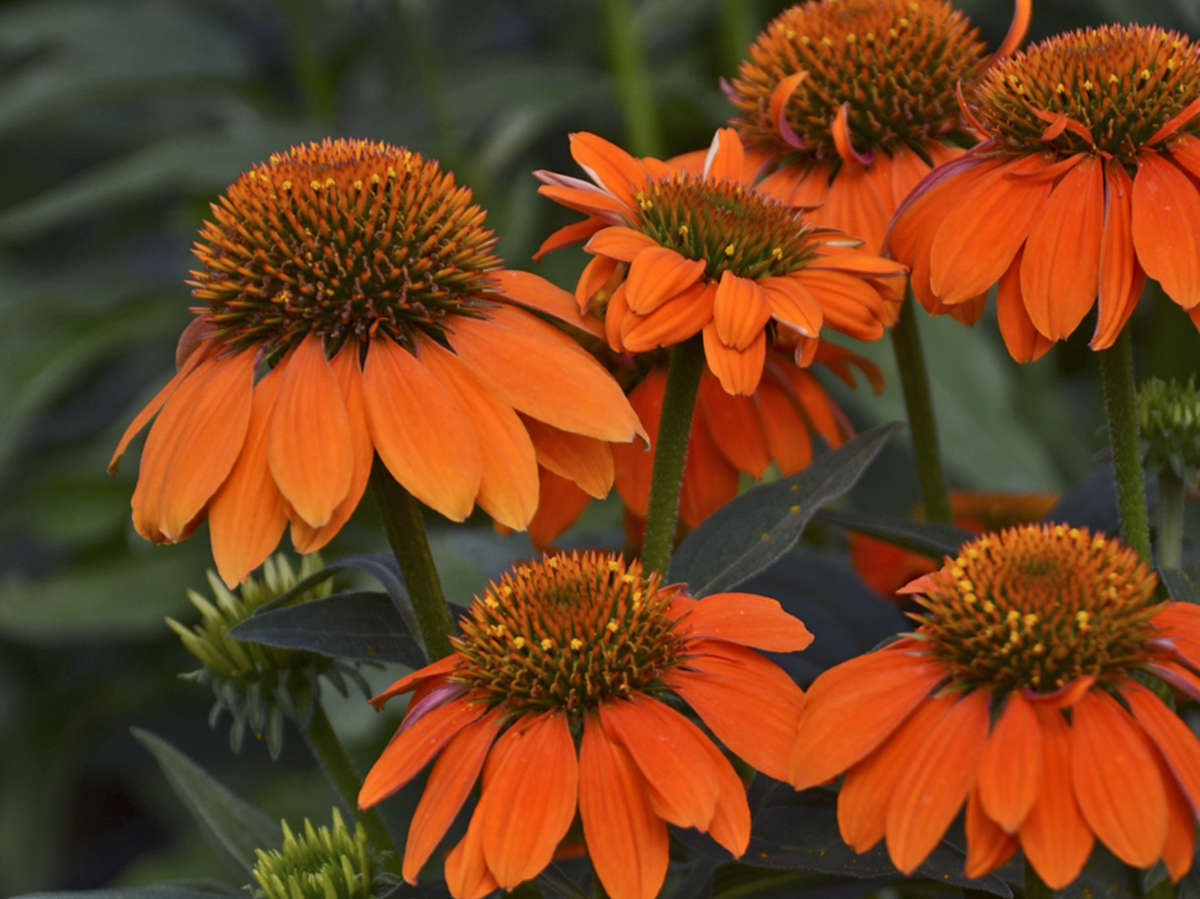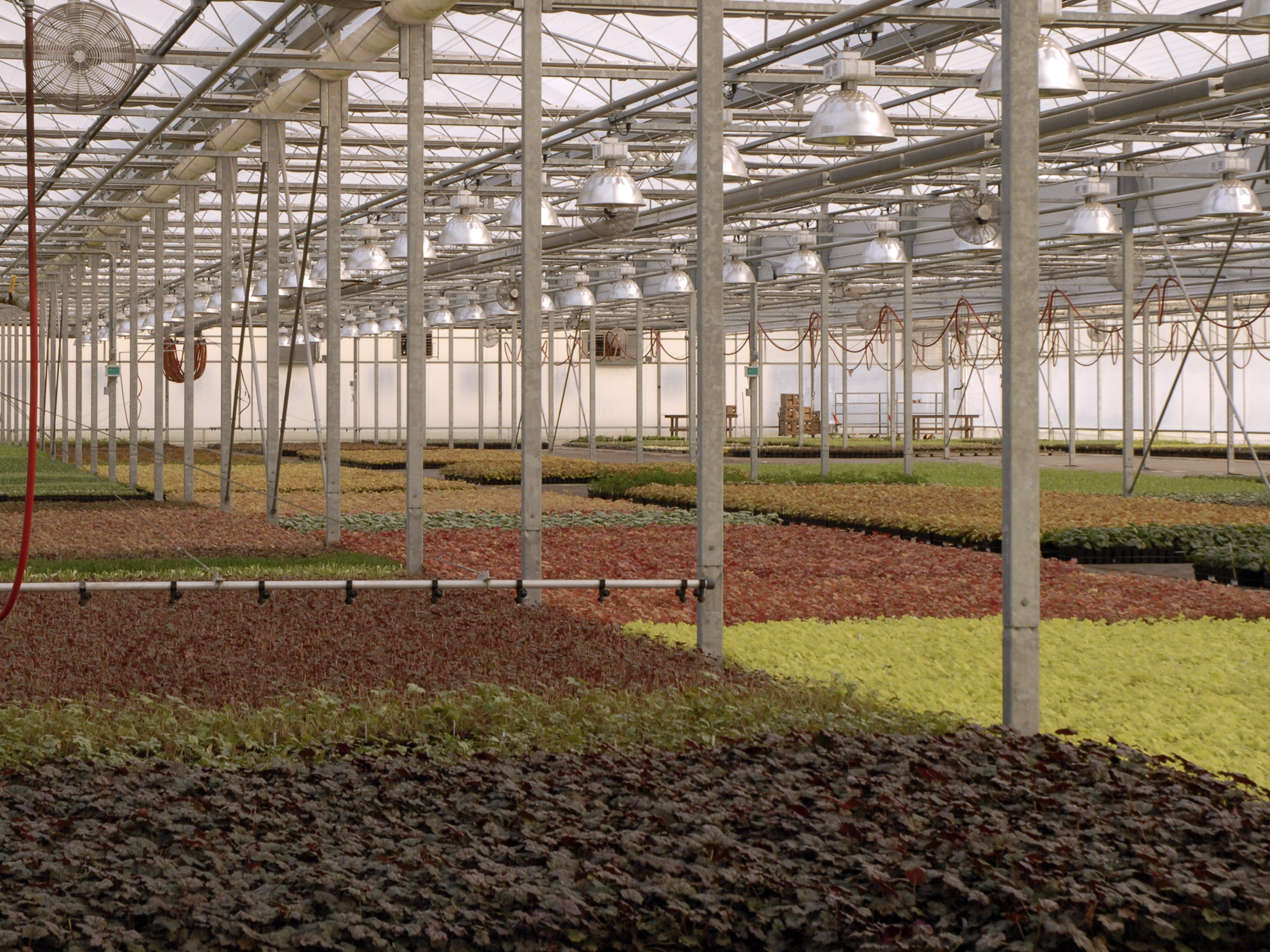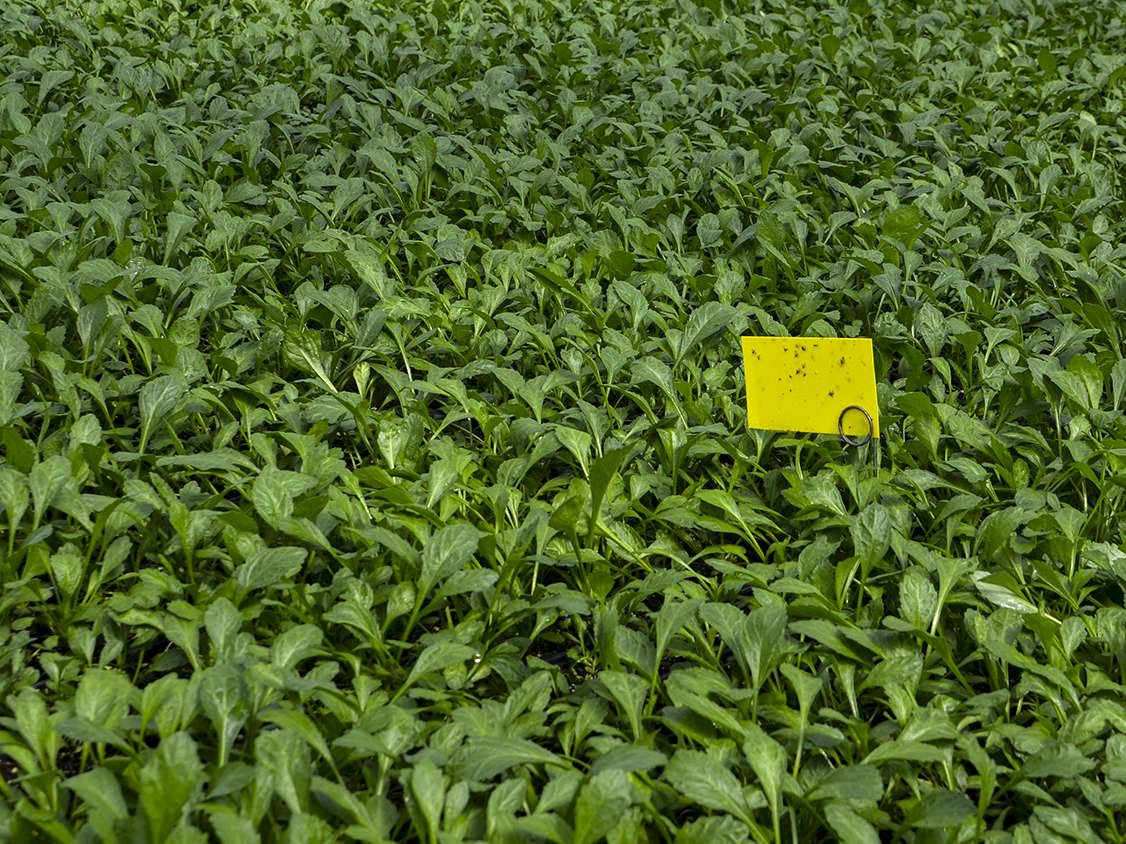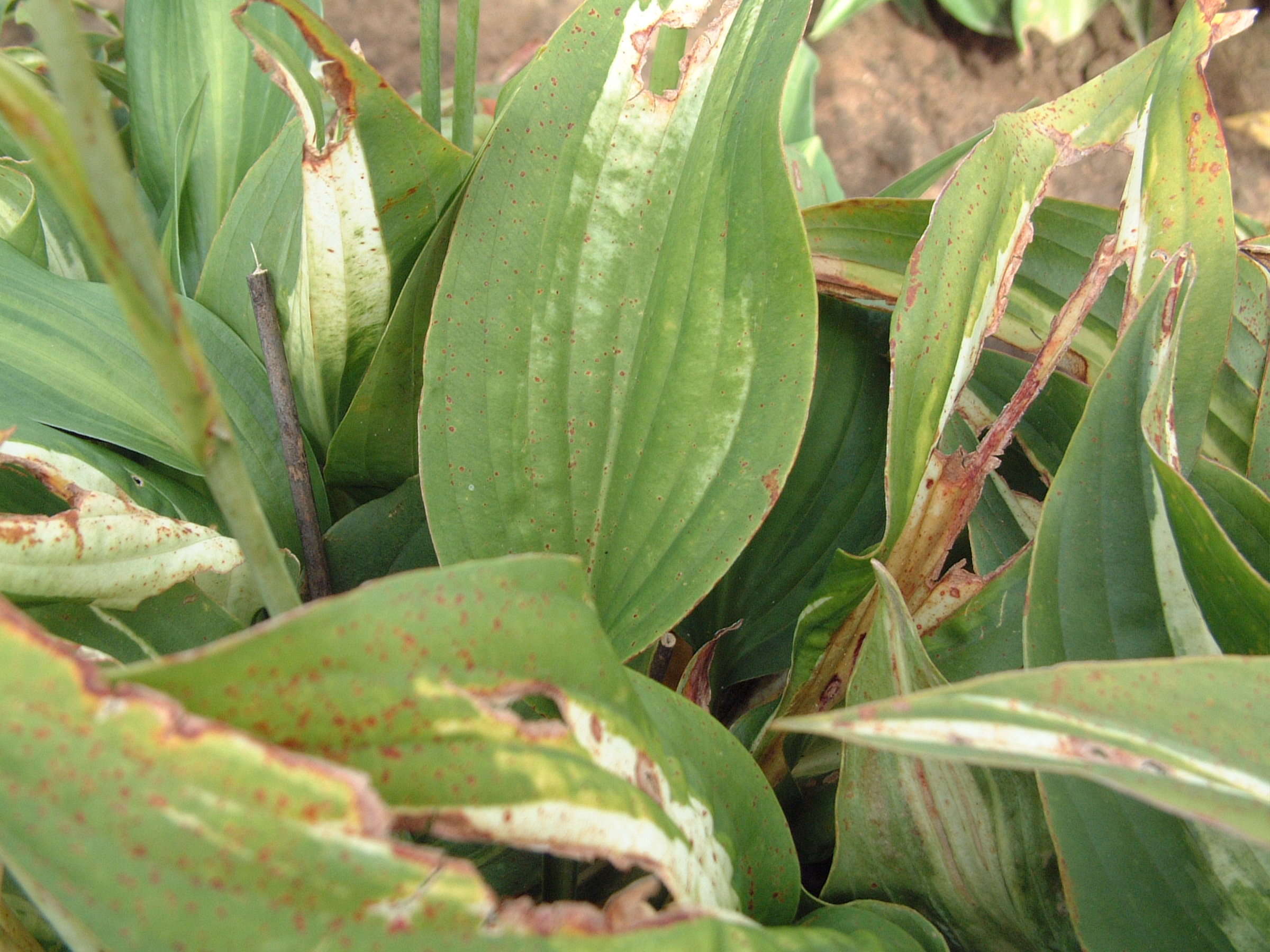Common Plant Health Issues
12/01/2008
Aster Yellows
What is it?
An Echinacea with Aster Yellows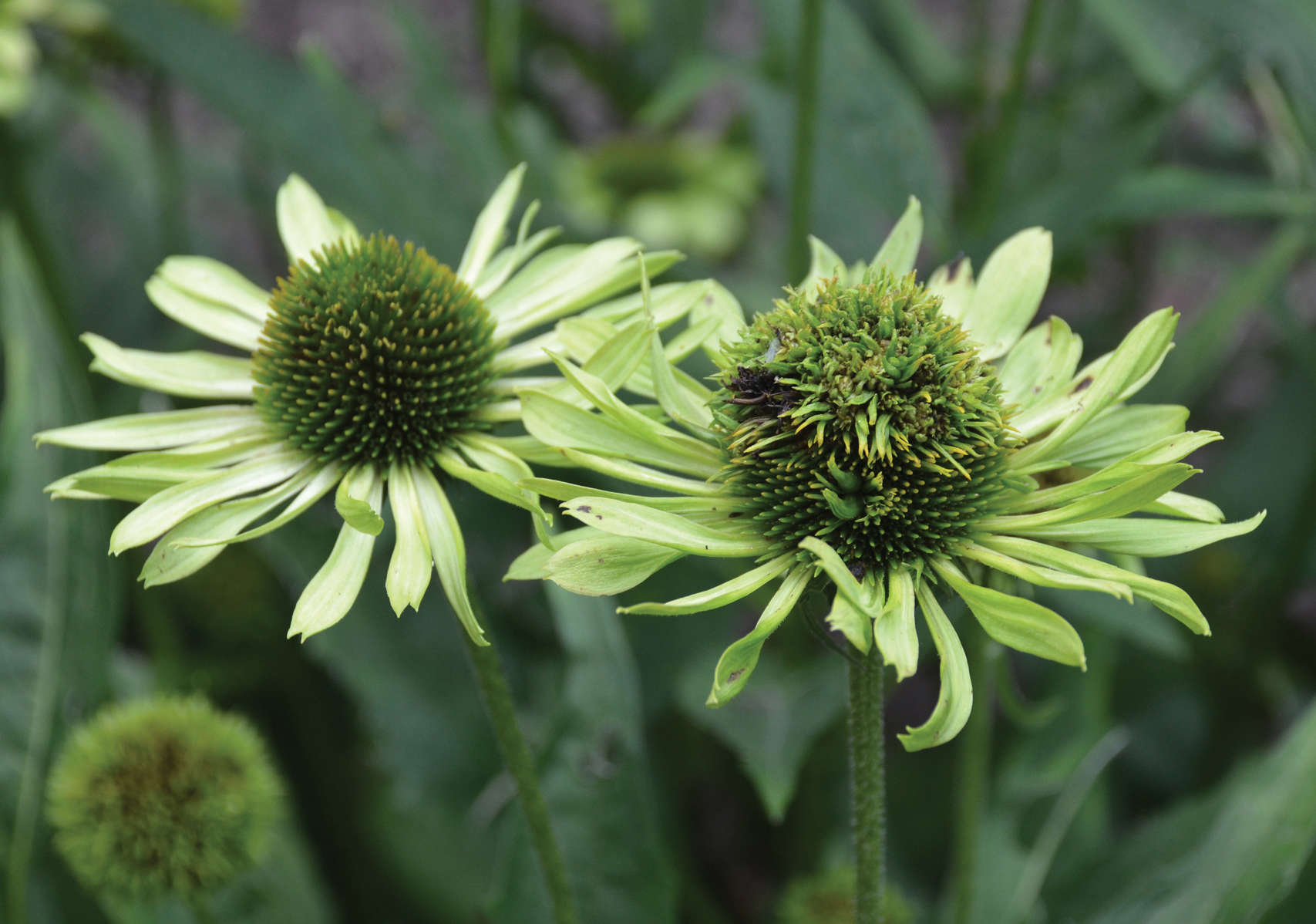
What is being done now?
Currently, any varieties we find with symptomatic plants are sent away for laboratory testing to verify Aster Yellows infection. After verification, we rouge out infected plants and, if necessary, initiate the search for clean propagation stock (like viruses and bacteria, there is no pesticide "cure" for Aster Yellows). Varieties we have verified with Aster Yellows include Eupatorium, Coreopsis, Echinacea, Veronica, and Gaillardia.
What preventative steps will happen in the future?
To prevent any future outbreaks of Aster Yellows, we employ rigorous aster leafhopper population monitoring in early spring thru late summer and set low spray thresholds to keep leafhoppers to a minimum. Also, we work to ensure all propagation stock is free of Aster Yellows.
Hosta Virus X (HVX)
What is it?
Hosta Virus X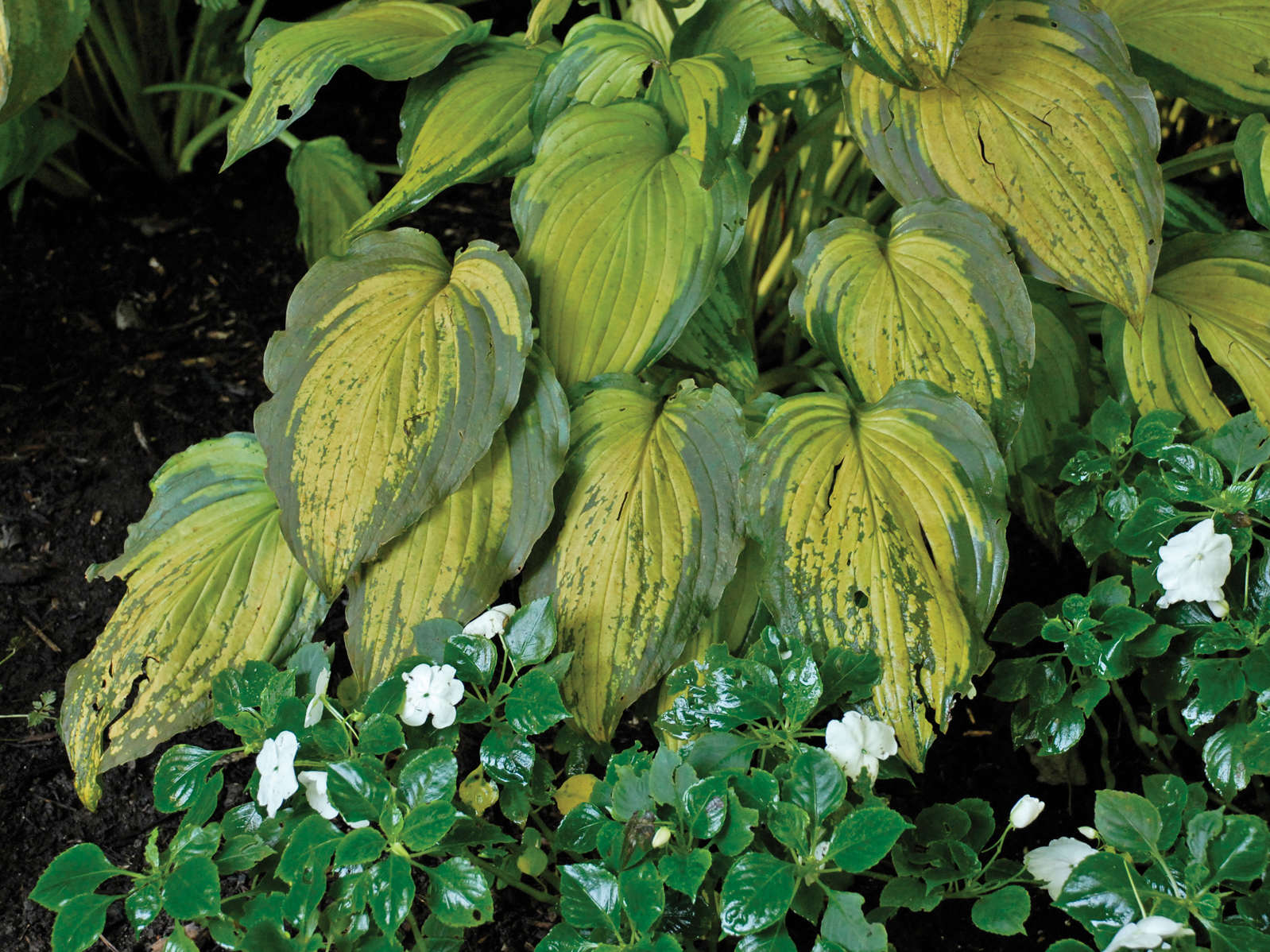
What is being done now?
Walter Gardens has known about HXV and has been protecting our customers from it even before it became a prevalent plant health issue in 2004. All Hostas sold by WGI are indexed for HXV.
What preventative steps will happen in the future?
We continually scout our crops looking for, among other things, symptoms of virus infection. All Hostas are routinely screened to ensure they are free of viruses detrimental to the plant appearance and growth.
Snail and Slug Problems
What is the problem?
When we have a particularly rainy spring, snail and slug populations multiply rapidly and become difficult to control. In dry years, they are not a problem.
What is being done now?
Currently, we are regularly applying slug & snail bait with the trade name Sluggo. It is toxic to snails and slugs but is virtually non-toxic to small animals and humans. The pellets degrade a week or two after application and the active ingredient, iron phosphate, is released into the soil as a fertilizer. Customers may occasionally find a decomposing pellet, as it appears moldy for a few days before completely disappearing.
What preventative steps will happen in the future?
Future preventative steps depend on Mother Nature. Routine spring sanitation of greenhouses usually suppresses snail and slug populations. In the event of another rainy period, frequent and consistent baiting will also occur.
